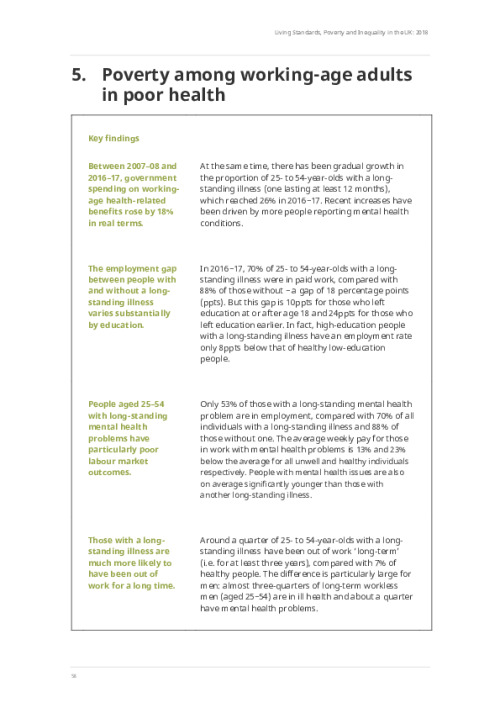This paper forms a small part of the wider and flagship annual publication “Living Standards, Poverty and Inequality in the UK".
In this chapter, we analyse how living standards differ between those with and without long-standing health problems. There are many ways in which health and living standards may interact. First, poor health may reduce an individual’s living standards as they have to spend more money on goods or services to mitigate the impact of their health condition. Second, poor health may restrict the amount of paid work that an individual may do (if they can do any at all), or restrict the type of work that they can do, reducing their earnings. Third, being on a low income may itself worsen certain health problems. Fourth, poor health and low incomes might both be caused by similar factors, such as low educational qualifications. Fifth, being unwell may directly reduce someone’s living standards in a broad sense, even if it does not affect their material standard of living. For all of these reasons, one might expect the living standards of those in poor health to be lower than those of the general population.
These issues are of increasing policy interest for (at least) three reasons. First, spending on benefits related to health has become an increasingly large share of working-age benefit expenditure and is expected to continue to grow significantly. Second, long-term sickness or disability is the second most common reason for 25- to 54-year-olds to be out of work (after looking after family) and is (now) a significantly more important reason than simply being unable to find a job despite searching for one (i.e. ‘unemployed’ according to the technical definition). Third, the government has set a target to halve the gap in the employment rate between those with a disability and those without (Department for Work & Pensions and Department of Health & Social Care, 2017).











